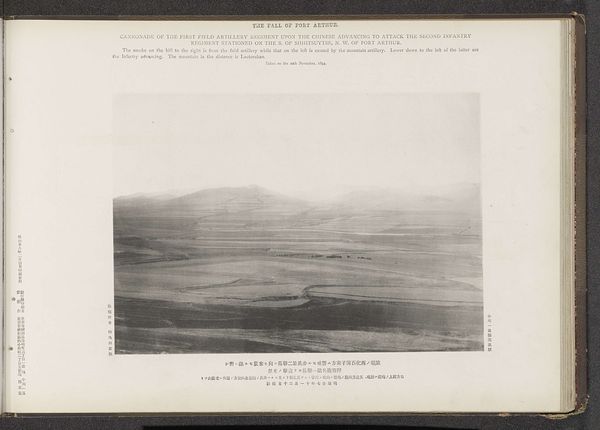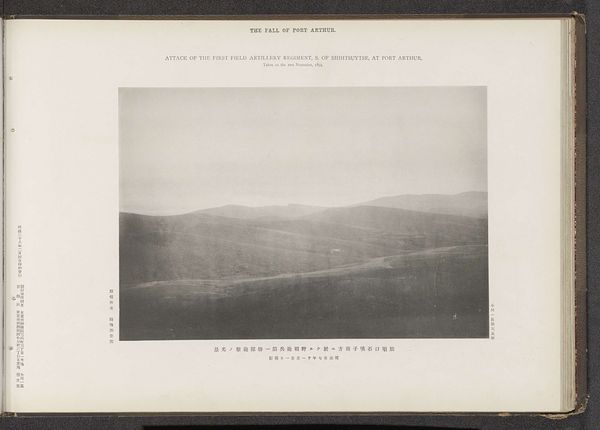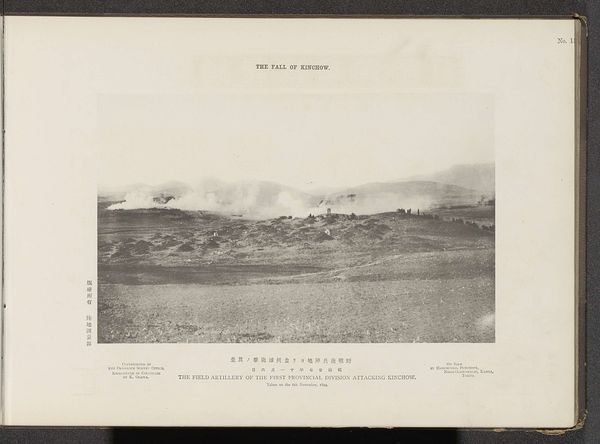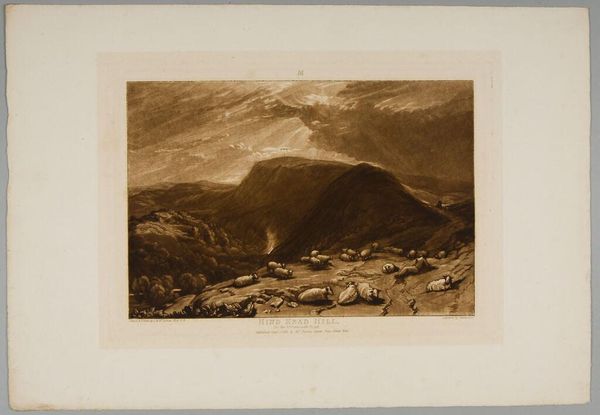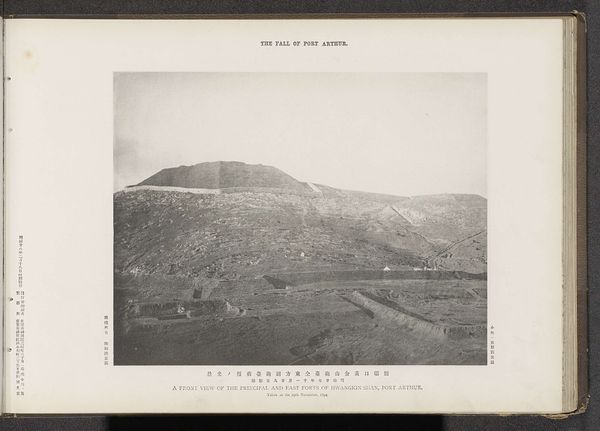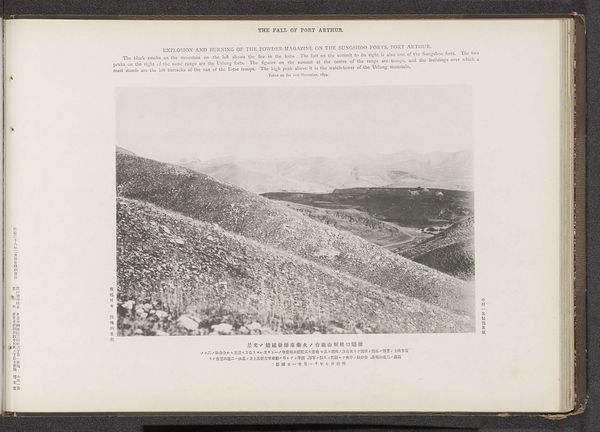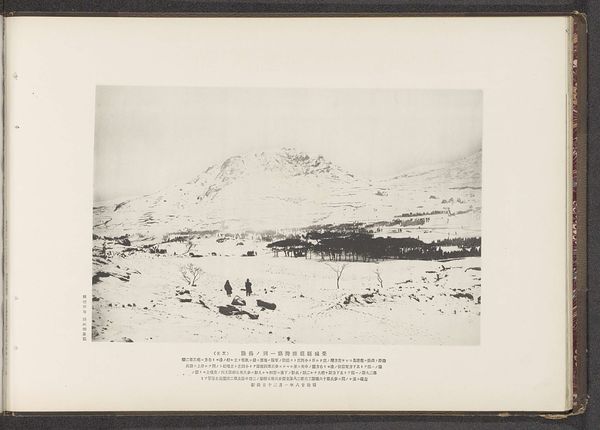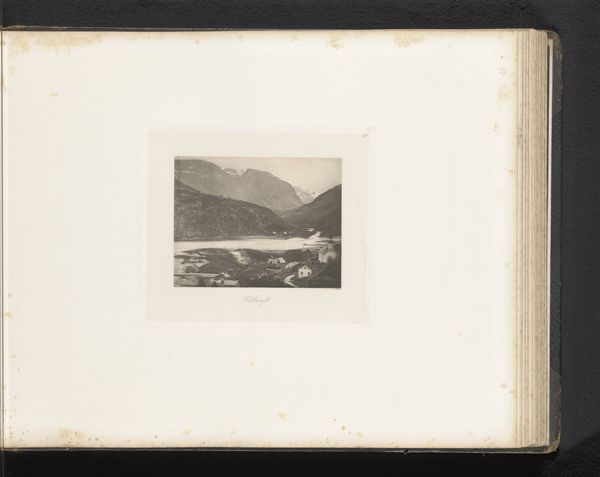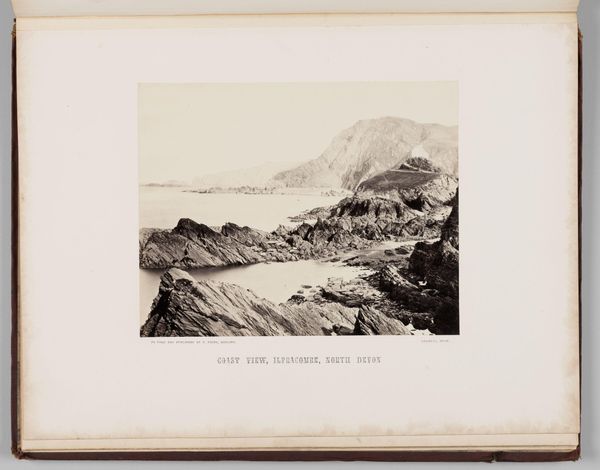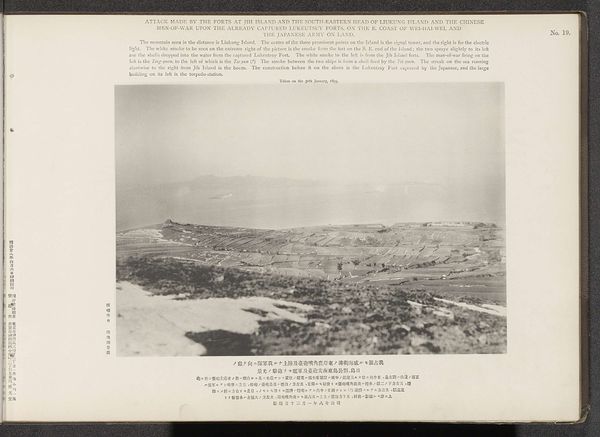
View of the Port Arthur straits from the Lantseying forts at Port Arthur Possibly 1894
0:00
0:00
print, photography, albumen-print
#
ink paper printed
# print
#
landscape
#
photography
#
ancient-mediterranean
#
orientalism
#
albumen-print
Dimensions: height 197 mm, width 272 mm
Copyright: Rijks Museum: Open Domain
Curator: What strikes me most about this albumen print, “View of the Port Arthur Straits…”, is the inherent tension it embodies. A seemingly innocuous landscape photograph, yet laden with the weight of colonial conflict. Editor: It's interesting, this scene captured by the Ordnance Survey Office around 1894, is quite serene. It's just a black and white photo depicting a landscape and a body of water. What historical context informs your reading of “tension” and “colonial conflict”? Curator: Precisely. This image wasn't created in a vacuum. Port Arthur, now Lüshunkou, was a site of intense geopolitical struggle. This image dates from around the time of the First Sino-Japanese War. The seemingly neutral gaze of the surveyor’s lens is itself a tool of empire. Doesn't the very act of surveying, mapping, and visually documenting this territory become a form of claiming and controlling it? Who do you think this image was created for, and what purpose did it serve? Editor: It seems like the photo, in that sense, presents a particular Western, or colonizing, gaze. So it wasn’t really a photograph documenting some kind of "natural landscape?" It's kind of troubling to look at it now. Curator: Exactly. Its composition and objective style serve to legitimize a particular viewpoint, suppressing other possible narratives and the experiences of the local population. How do we deconstruct the colonial gaze inherent in images like this and give voice to the perspectives that were marginalized or erased? It encourages critical thinking about the relationship between representation, power, and historical context. Editor: It is eye-opening to think of the photograph as participating in historical and political narratives. I would never look at landscape photos the same way again.
Comments
No comments
Be the first to comment and join the conversation on the ultimate creative platform.
